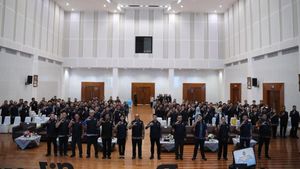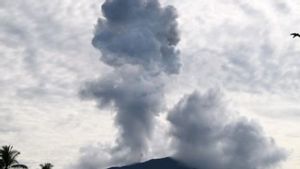JAKARTA - When a massive star runs out of fuel and is nearing the end of his life, it explodes and devotes a huge amount of energy called a supernova. This event can be so bright that it outperforms the entire galaxy, but does not last long just an instant of sight, in cosmic terms.
It is difficult to capture the sudden brightness and rapid attenuation of a supernova event, as they are difficult to predict. But the Hubble Space Telescope recently managed to capture three different moments from a supernova in one image.
"It is very rare for supernovae to be detected at a very early stage, because that stage is very short," Wenlei Chen, author of the paper, said in a statement quoted by Digital Trends.
It only lasts for a few hours until a few days, and can easily be missed even for nearby detection. In the same exposure, we can see image sequences, such as some supernova faces, "he added.
It is possible to see three distinct time spots due to a phenomenon called gravitational lensing, in which a massive object comes between us and the observables. If the intermediate object is large enough, its gravity deflects the space, changing the view of the object behind it.
The background object can appear brighter when the intermediary object acts like a broadening glass, and can appear at different points in space when the light is deflected.
In this case, the light from the supernova is deflected along three different tracks with different lengths, so that the light that arrives at Hubble shows three different examples.
Supernova is a very distant one, meaning it is ancient, thought to have occurred 11 billion years ago, which is close to the beginning of the universe 13.8 billion years ago. This is one of the earliest observed supernovae in great detail, and because three different time spots were captured in the image, the researchers were able to measure the size of the star.
The star is estimated to be about 500 times larger than the sun, a type of star called a red supergiant.
The English, Chinese, Japanese, Arabic, and French versions are automatically generated by the AI. So there may still be inaccuracies in translating, please always see Indonesian as our main language. (system supported by DigitalSiber.id)













